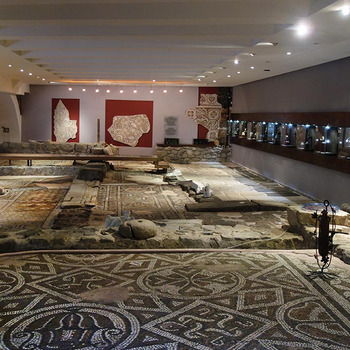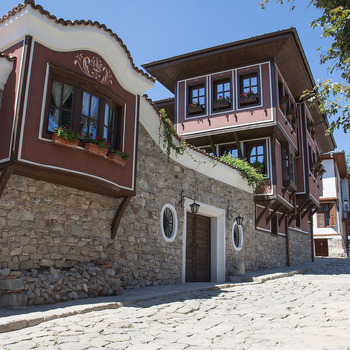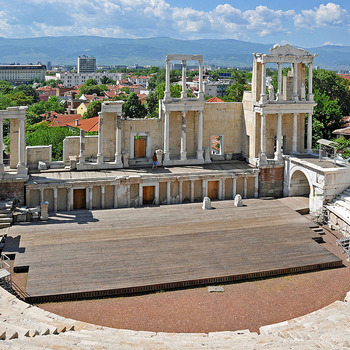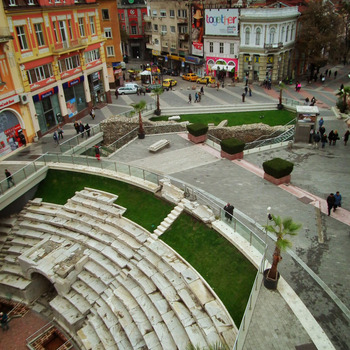Sveta Nedelya Church in Plovdiv
Overview
"Sveta Nedelya" is an Orthodox church in the city of Plovdiv, named after the holy martyr Nedelya (Kyriakia).
It is located in the Ancient City, under the eastern wall of the city fortress, next to the eastern city gate Hissar Kapiya Gate. The church is known as a monument of construction and art from the time of the Bulgarian Revival.
The church "Sveta Nedelya" probably originated after 1578, because it is not among the eight Plovdiv churches, seen then by Stefan Gerlach. (It is possible that the church of St. Spas mentioned by this German traveler was located near the modern "Sveta Nedelya".) The church was first mentioned by the patriarch of Jerusalem Chrysanthemum, who visited Plovdiv in 1720. An inscription on the marble slab above the door in today's narthex says that at the beginning of the 19th century its building had reached a "situation threatening collapse." to the two neighboring churches, Sveta Nedelya and St. Constantine and Helena, he also donated 10,000 groschen.
The old church was demolished, and while a new church was being built, a chapel was built, first called St. Athanasius and later Introduction to the Mother of God. In this chapel, which still stands in the northern part of the churchyard, the beautiful iconostasis of the old church, dating from 1766, was transferred.
The decision of the church parishioners, led by Ivan Koyumdzhioglu, for the erection of the new church is preserved in the condico of the Plovdiv metropolitanate. It is dated January 27, 1832. In August 1832, the completion of the construction was marked by an unknown author with three Greek poems. The church was consecrated on September 19, 1832 by Metropolitan Nicephorus.
Built by masters from Bratsigovo, led by Petko Petkov Boz, the new, entirely stone building was impressive for its time: 30 m long and 25 m wide (the largest temple in the city at the time). In 1894 a dome 16 m above the ground was added to it, painted with the image of the blessing Christ. Later, according to a project by the architect Mikhail Nenkov (1877 - 1938), a high bell tower was erected (instead of the old and low bell tower). It was completed in 1905, and in 1912 a large French clock was placed on it. Around 1910, the original bell tower on the south side of the church roof and one of the stairs leading to the inner balcony were demolished and the porch was glazed.
In 1892 the church passed from the department of the Constantinople Patriarchate to that of the Bulgarian Exarchate. In 1911, a parish Orthodox Christian fraternity was founded, named after Holy Sunday, with the main goal of educating parishioners and helping poor and unhappy Christians. Again in 1911 a fountain was built in the churchyard. In 1927, the state declared the temple and its chapel antiquities.
The church is a three-nave pseudo-basilica with a triapsid altar. The apses are built of travertine. The largest is the average, on which is written the year of construction of the temple (1832). The three ships are separated by two rows of wooden columns. The columns end with ornamented capitals and are connected by rock-shaped arches.
Recommended
- Exposition "Bulgarian Revival"
- Church of St. st konstantin and Elena
- Regional Ethnographic Museum
- House-museum of Atanas Krastev
- Nebet Tepe Park
- Balabanova house
- Hindlian House
- Hissar Kapiya Gate


 Bulgarian
Bulgarian Romanian
Romanian



